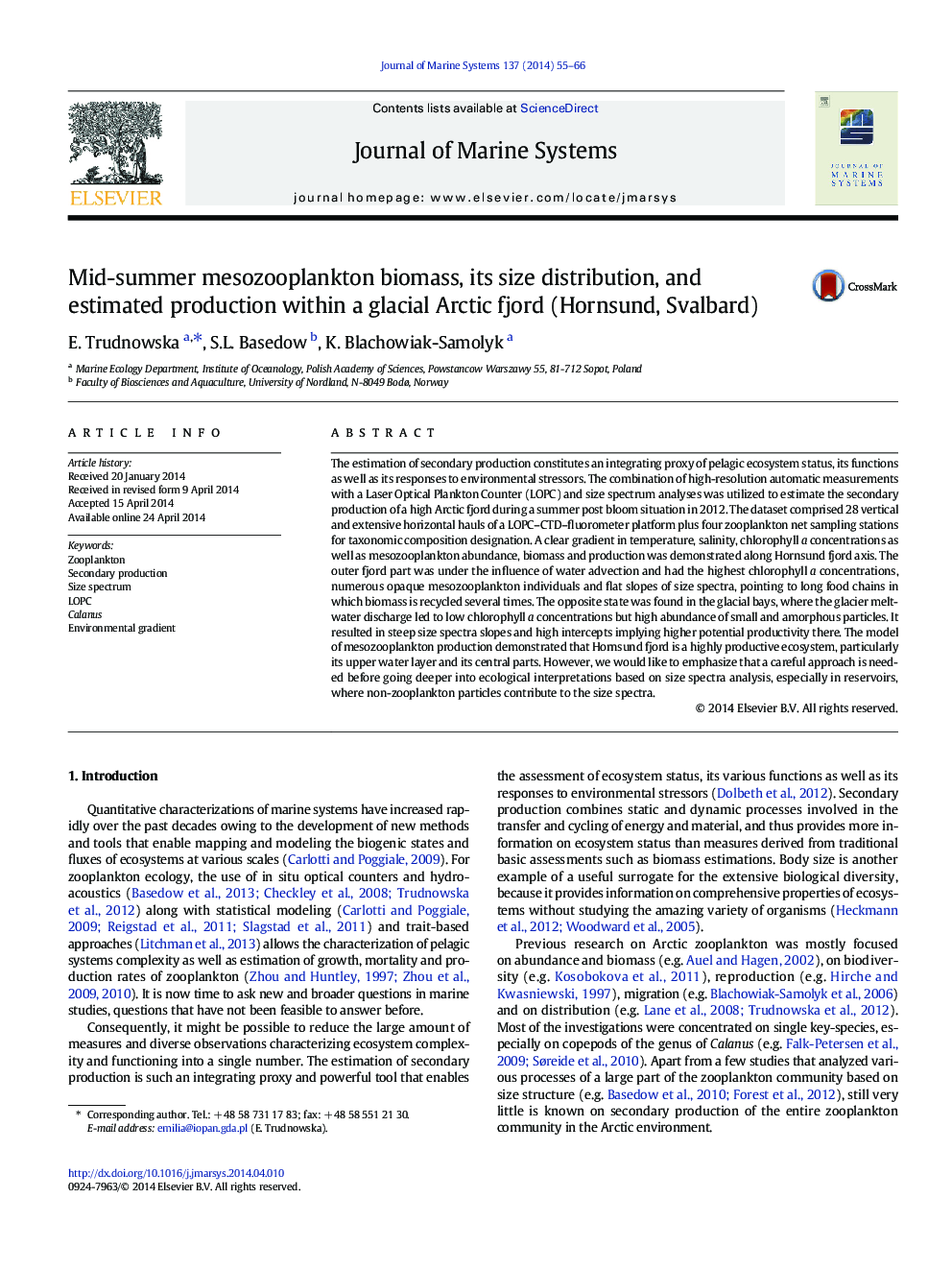| Article ID | Journal | Published Year | Pages | File Type |
|---|---|---|---|---|
| 4548033 | Journal of Marine Systems | 2014 | 12 Pages |
Abstract
The estimation of secondary production constitutes an integrating proxy of pelagic ecosystem status, its functions as well as its responses to environmental stressors. The combination of high-resolution automatic measurements with a Laser Optical Plankton Counter (LOPC) and size spectrum analyses was utilized to estimate the secondary production of a high Arctic fjord during a summer post bloom situation in 2012. The dataset comprised 28 vertical and extensive horizontal hauls of a LOPC-CTD-fluorometer platform plus four zooplankton net sampling stations for taxonomic composition designation. A clear gradient in temperature, salinity, chlorophyll a concentrations as well as mesozooplankton abundance, biomass and production was demonstrated along Hornsund fjord axis. The outer fjord part was under the influence of water advection and had the highest chlorophyll a concentrations, numerous opaque mesozooplankton individuals and flat slopes of size spectra, pointing to long food chains in which biomass is recycled several times. The opposite state was found in the glacial bays, where the glacier meltwater discharge led to low chlorophyll a concentrations but high abundance of small and amorphous particles. It resulted in steep size spectra slopes and high intercepts implying higher potential productivity there. The model of mesozooplankton production demonstrated that Hornsund fjord is a highly productive ecosystem, particularly its upper water layer and its central parts. However, we would like to emphasize that a careful approach is needed before going deeper into ecological interpretations based on size spectra analysis, especially in reservoirs, where non-zooplankton particles contribute to the size spectra.
Related Topics
Physical Sciences and Engineering
Earth and Planetary Sciences
Oceanography
Authors
E. Trudnowska, S.L. Basedow, K. Blachowiak-Samolyk,
